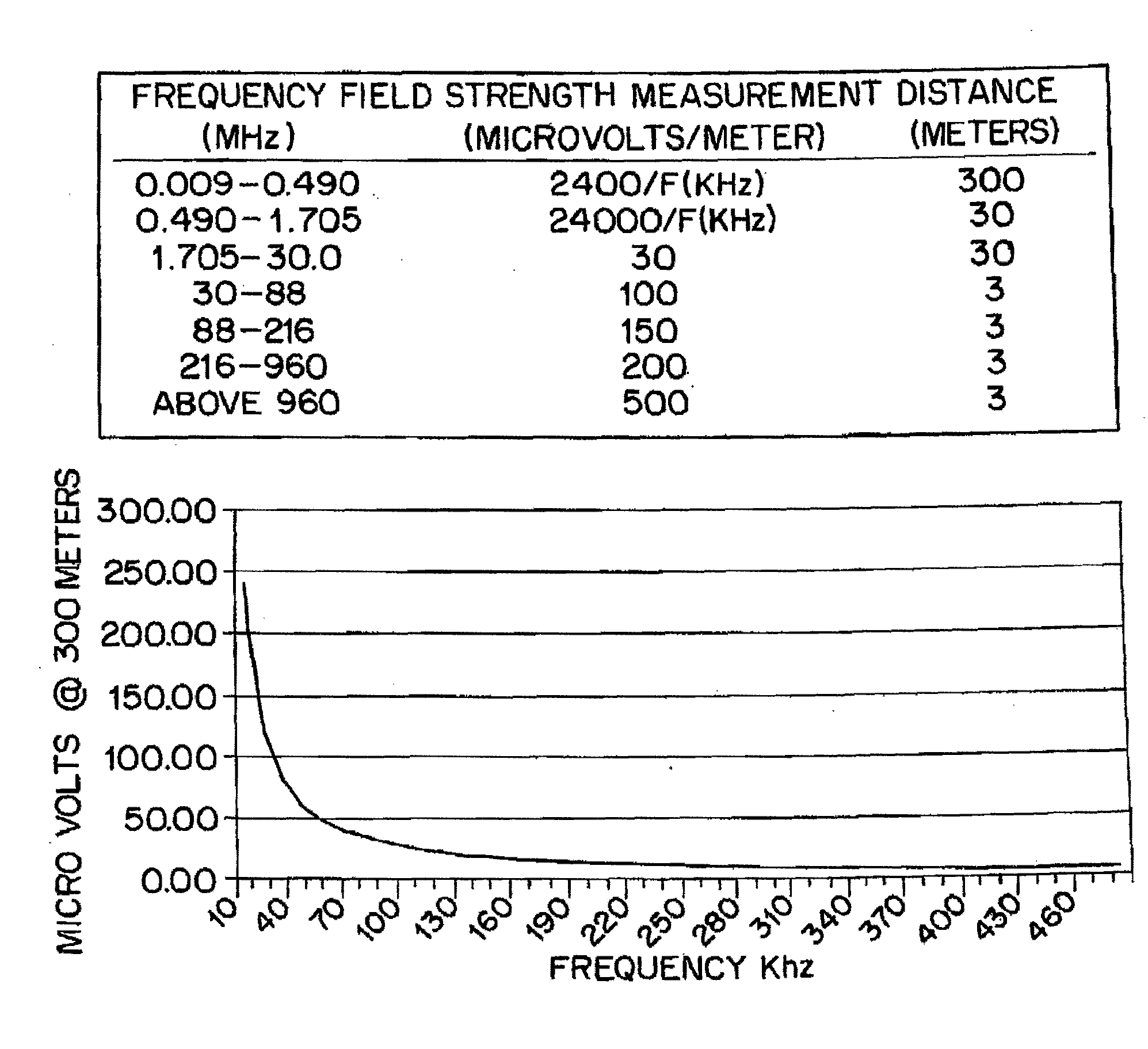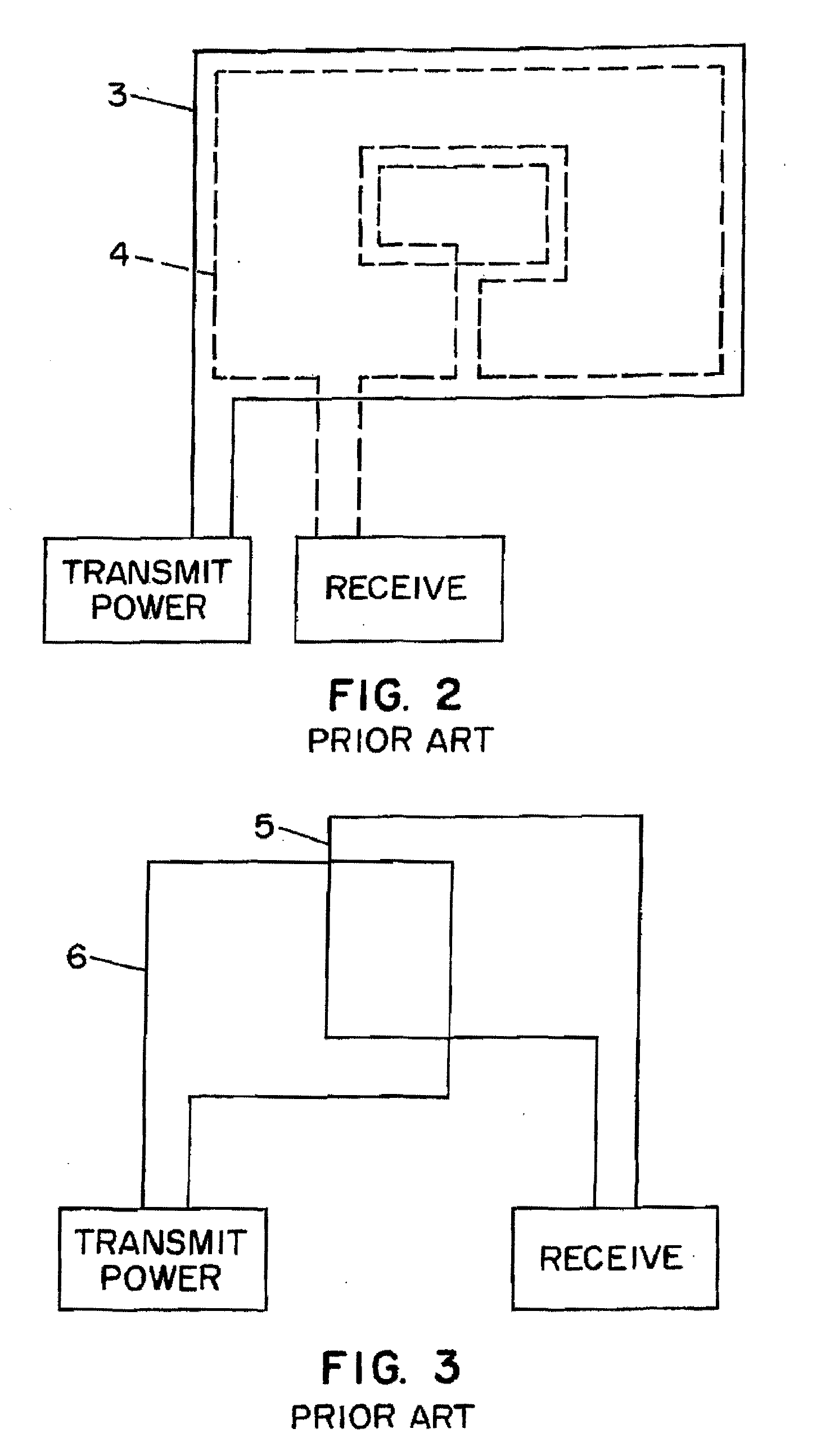Energy Harvesting for Low Frequency Inductive Tagging
a low frequency inductive tagging and energy harvesting technology, applied in the field of detecting and tracking of animate objects, can solve the problems of insufficient information the range of devices was limited to a few inches, and the authors may not at that time be fully informed about the functional significance of the differences outlined above, etc., to achieve the effect of reducing the electromagnetic coupling of two co-planar air-core coils, reducing the electro-magnetic coupling rate, and double communication speed
- Summary
- Abstract
- Description
- Claims
- Application Information
AI Technical Summary
Benefits of technology
Problems solved by technology
Method used
Image
Examples
Embodiment Construction
[0169]Turning to FIG. 4, what is shown is the principle that leads to substantially decoupled antennas. The flux lines are shown for the arrangement in FIG. 3. Coils 7 and 11 are shifted. Flux between coils goes in one direction through center and the opposite direction outside of the coil. By shifting the position of the coils, the opposing flux lines from coil 7 and 11 may be used to null out the field so they are nearly 100% decoupled.
[0170]FIG. 5 shows the practical ability to null out the fields. In this case a signal of 132 kHz was applied to coil 12 and the voltage was measured on a high-impedance oscilloscope from coil 13. The graph below shows measured voltage in coil 13 as a function of distance D (14). The graph has converted D to a percent-overlap figure. At 15% overlap the induced voltage due to coupling is near zero. It should be understood that two antennas are “substantially decoupled” when their mutual overlap is less than 50%.
[0171]FIG. 6 shows the co-planar antenn...
PUM
 Login to View More
Login to View More Abstract
Description
Claims
Application Information
 Login to View More
Login to View More - R&D
- Intellectual Property
- Life Sciences
- Materials
- Tech Scout
- Unparalleled Data Quality
- Higher Quality Content
- 60% Fewer Hallucinations
Browse by: Latest US Patents, China's latest patents, Technical Efficacy Thesaurus, Application Domain, Technology Topic, Popular Technical Reports.
© 2025 PatSnap. All rights reserved.Legal|Privacy policy|Modern Slavery Act Transparency Statement|Sitemap|About US| Contact US: help@patsnap.com



